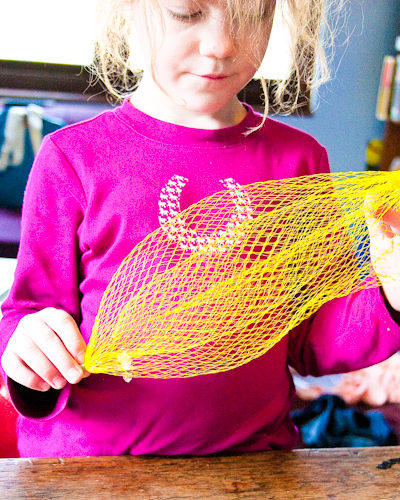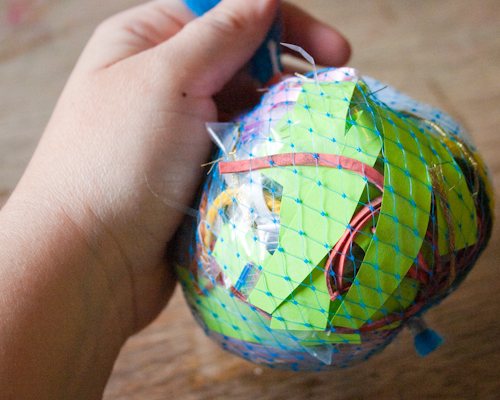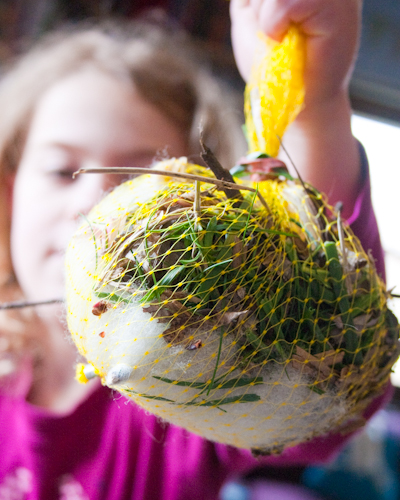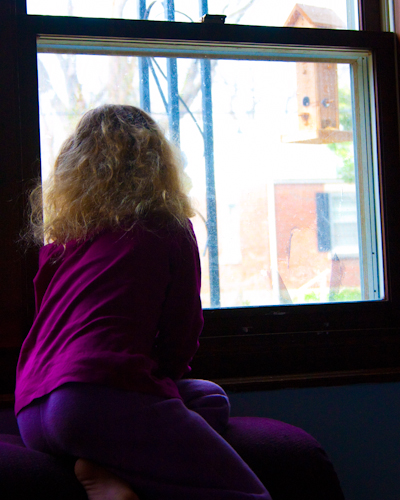Since it’s spring now (and I insist this even though the high temperature here yesterday was 41 degrees Farenheit), those little girls have also been hopping around the house and yard, just like little birds themselves, finding all the best tidbits for the yearly offering that we like to call the Nesting Materials Buffet. If you’ve got a plastic mesh produce bag that you’d rather not toss in the trash just yet, and a little time of your own to gather your own tidbits from your house and yard, then you, too, can set up a station for your own pampered neighborhood birds to come to and gather all sorts of goodies for building their nests. Here’s how: You’ll want to find a leftover mesh produce bag–often they’re used to contain onions or oranges at the grocery store, and sometimes they’re used in other packaging, as well (my daughter’s new baseball glove came with a baseball in its own plastic mesh bag, sigh). You may be the sort who prefers only natural materials for your projects, but unless you want to seek out metal caging or chickenwire or make a container out of twigs, the plastic mesh produce bag really is ideal for this project–it’s sturdy, won’t hold germs or bacteria or other birdly grime, and easily air dries after a rainshower. Now, for everyone’s favorite part: stuff your produce bag full with anything that you’d think the birds might like. You may notice in these photos that there are a few unlikely items in our own nesting materials bags. We’re homeschoolers, and this is a science project for my girls, and this is, apparently, when they’re going to learn that birds tend to not make their nests out of large pieces of paper or plastic drinking straws. The rubber bands, however? I think that those stand a fighting chance of being chosen. Wrap the produce bag tightly around the nesting materials–this brings all the materials to the mesh, so that the birds can easily pick and choose–and secure it shut with a rubber band, or, if using that plastic bag has been killing you so far, go ahead and treat yourself by tying it off with a nice piece of twine or yarn, instead. Notice that my girls have filled one bag with natural materials, such as grass, wool fleece, cornhusks leftover from our corn husk dolls, human hair, cat fur, and small twigs. Their other bag is filled with man-made items, such as polyester batting, thread, yarn, strips from plastic bags, beading wire, and dental floss. Can you guess what their science experiment is? Hang the bag of nesting materials in a location that is visible to birds, such as near their bird feeder or bird bath. Also make sure that the birds have plenty of places to perch and browse, either on the bag itself or on tree branches or railings right next to the bag. Then, all you have to do is keep your eye out so that you can enjoy watching the birds make use of your materials. If you solve a scientific mystery for yourself in the process, then all the better!



